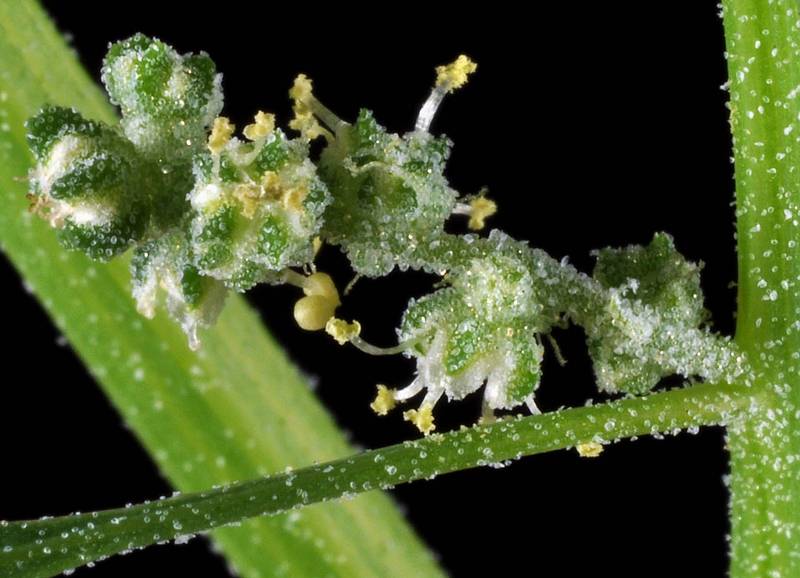Hosted by the University of Washington Herbarium, Burke Museum
Publication: Sp. Pl. 1: 219. 1753.
Origin: Introduced from Europe, but some populations in the Midwest may be native to North America, according to FNA
Herbarium search: CPNWH
Notes: FNA4: "Chenopodium album, one of the worst weeds and most widespread synanthropic plants on the Earth, in its broad circumscription is also among the most polymorphic plant species. It is a loosely arranged aggregate of still insufficiently understood races. Hundreds of segregate microspecies and infraspecific entities (including nomenclatural combinations) of the C. album aggregate have been described and/or recognized by various authors. Some authors have recognized numerous segregate intergrading species, while others have developed elaborate infraspecific hierarchies with numerous subspecies, varieties, forms, and even numerous subforms (e.g., B. Jüttersonke and K. Arlt 1989), or have combined both approaches. Neither approach has brought satisfactory and uncontroversial results.
It is evident that most recent evolutionary processes within the group were greatly affected by anthropic factors, including extensive recent invasions, hybridization between previously geographically isolated taxa, poly-ploidy, intensive selective processes and mutagenesis in synanthropic habitats, gene drift, and so forth. All of these modern factors further complicated the taxonomic situation. Consequently, no infraspecific taxa are formally recognized in the present treatment. We attempt, however, to outline below the most common or noteworthy groups currently placed in Chenopodium album sensu lato. Although we list such groups under binomials, they should be considered here as informal groupings rather than accepted species.
It should be also kept in mind that many enigmatic and deviant forms of the Chenopodium album aggregate are in fact hybrids with other (occasionally several) species, and between infraspecific entities. C. album hybridizes with C. suecicum (producing C. ×fursajevii Aellen & Iljin), C. opulifolium (producing C. ×preissmannii Murr), C. strictum [producing C. ×pseudostriatum (Zschacke) Murr], C. ficifolium (producing C. ×jedlickae Dvorák or C. ×zahnii Murr), C. berlandieri (producing C. ×variabile Aellen), and some other species."
References:
Last updated 10/19/2023 by David Giblin.

